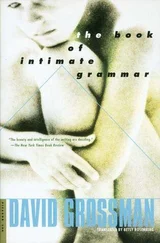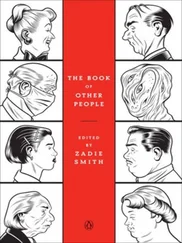Result: Argentina 2, England 2 (Argentina win 4–3 on penalties)
ALFREDO DI STEFANO for Real Madrid v Eintracht Frankfurt in the 1960 European Cup final at Hampden Park, Glasgow.
The Germans have just scored their second goal, to make it 5–2, when the balding Don Alfredo takes the ball from Francisco Gento on the edge of the centre circle, accelerates on a straight 30-yard run and drives his shot past Loy, the German goalkeeper. From restart to bulging net, exactly 15 seconds.
Result: Real Madrid 7, Eintracht Frankfurt 3.
DENIS LAW for Manchester City v Manchester United at Old Trafford in Division One, 1974.
No goal was ever freighted with greater poignancy than this. On the last day of the season, United’s former hero backheeled the ball past Alex Stepney to send his old club down. Law had not wanted to play in the match, and could not bear to celebrate his goal.
Result: Manchester City 1, Manchester United 0.
SIR CHRIS BONINGTON’S 9 BEST MOUNTAIN EXPERIENCES
Chris Bonington is Britain’s best-known mountaineer. He has been climbing since the 1950s and has led expeditions throughout the world, including two which made the first successful ascents of the South Face of Annapurna and the South West Face of Everest. He was knighted in 1996. Bonington continues to climb and made a first ascent of a peak in the Indian Himalayas in 2003.
‘My first choice is my best ever, but after that I’ve arranged them in chronological order, as it seems invidious to say that any one experience is better than another, they are all so different in what they meant to me.’
1. THE SOUTH WEST RIDGE OF THE WEST SUMMIT OF SHIVLING (1983)
Biggest isn’t necessarily best. It had all the ingredients that made it very special for me. It’s a lovely, shapely peak of 6,520 m.; the West summit had never been climbed; the team was small — just Jim Fotheringham and myself; it was spontaneous, since we had come out to climb another mountain, changed our minds and went for Shivling; it was alpine-style, since we packed a sack at the bottom and without any recce or preparation kept going till we got to the top, five days later; the climbing was complex and difficult; the summit was sharp and pointed; we had to find another way down. Altogether the perfect climbing adventure.
2. A CLIMB ON SUILVEN AND A LONG WALK OUT (1952)
It was my second summer of climbing. My mum gave me £3.00 a week to survive through the summer, climbing around the Scottish Highlands, staying in bothies or Youth Hostels. Tony and I had a few days sleeping in an open vault in the little ruin of Ardvreck Castle on the shore of Loch Assynt when we set out to do a climb on the West Buttress of Suilven. We hitched to Lochinver and then made the long walk in to the foot of Suilven, left our 15-kilo rucksacks with all our stuff for the holiday at the foot, did the climb, of which I can remember little except that the route-finding was challenging. We then did the traverse of the long whaleback of Suilven, with its stunning views of the Northern Highlands, walked back to our rucksacks, picked them up and carried them south over broken pathless ground to the head of Loch Sionascaig and then down its eastern shore to a bridge over a stream and a path that led over a pass to Linneraineach. It was around 18 miles of rough terrain with very few paths and some of the wildest, loveliest highland country in the British Isles. After all these years I can still remember watching the sun setting over Loch Sionascaig, the numbing tiredness as we completed our walk with the last climb over the col, and the huge relief of finding an empty bothy with a concrete floor that in our exhaustion felt like a feather bed.
3. KING COBRA (1960)
Climbing with Tom Patey was always a delight. After getting back from my first Himalayan expedition to Annapurna II, I joined him for a magical holiday in the northwest Highlands, working our way south from Torridon down to Skye, always climbing new routes (you never did anything else when climbing with Tom, where we did the best climb of all, the first ascent of King Cobra, up the formidable Coireachan Ruadha face of Sgurr Mhiccoinich. Today it’s graded HVS (Hard Very Severe) but it is a real adventure climb in a fabulous setting.
4. NORTH FACE OF THE GRANDES JORASSES AND THE TRAVERSE OF THE JORASSES AND ROCHEFORT RIDGE (1962)
There was something very special about these two days. Don Whillans and I had spent the summer first trying the North Wall of the Eiger, and then climbing in the Austrian Alps based in Innsbruck, before starting for home on his motorbike. We called in at the Bernina Alps to climb the North Face of the Badile and then stopped off at Chamonix. The weather was perfect — Don had to get home, but I decided to stay for just one more climb. I met up with Ian Clough and we set out to climb the Walker Spur of the Grandes Jorasses.
It’s standard practice to bivouac at the bottom and we did so with about six other parties. Next morning high cloud was blowing in, perhaps sign of a bad weather front. All the others retreated, but I had a hunch that it would clear and so we kept going with the Spur to ourselves. The cloud cleared, the climbing was immaculate and we reached the top in the late afternoon.
We just didn’t want it to end, and so instead of descending the easy route to the south, we bivouacked on the summit and the next day traversed the Grandes Jorasses and the Rochefort Ridge to the Torino Hut. It was wonderful classic ridge-climbing. Ian and I hit that perfect level of teamwork, both of us at the peak of fitness, that makes climbing so special. Three days later we were on the North Wall of the Eiger to make the first British ascent — but our two days on the Jorasses provided an even more memorable experience.
5. COMING DOWN FROM CAMP VI. EVEREST SOUTH WEST FACE (1975)
The South West Face of Everest was a huge challenge — logistics, man management, hard climbing and plenty of uncertainty. There were fun moments, a lot of hard graft and some agonising experiences — in some ways it was the biggest all-round challenge I have ever faced and there was one moment when it all felt worthwhile.
We had just completed the carry from Camp V to our top camp, to put Doug Scott and Dougal Haston in position to make their bid for the summit. They had all they needed, the weather seemed settled and we had done everything we could do — it was now up to them.
On the way down I sat and rested, gazing out over the peaks and tumbled clouds that showed that the monsoon was still with us, but that we were above its effects. Our timing had been spot on. I had a profound sense of peace and a feeling of love for this team of mine that had become so effective and had worked so hard to get us to the position we were now in. All the effort and worry seemed worthwhile — indeed enhanced the sense I had of fulfilment.
6. KONGUR (1981)
In 1979 the Chinese opened eight peaks in China to foreigners. The Mount Everest Foundation decided to organise an expedition to one of these peaks — Kongur, in Sinkiang, at 7,719 m. the second-highest unclimbed peak in the world. We made a recce in 1980 and then in 1981 took part in a large scientific expedition in which us four climbers, Peter Boardman, Joe Tasker, Al Rouse and myself, were both guinea pigs and an alpine-style climbing team.
The climb proved challenging, needing two attempts, and involved crossing a 7,000-m. peak and a knife-edged connecting ridge, four days trapped by a storm in minuscule snow caves and a final push to the summit up steep mixed ground. We bivouacked on top, even trekked over to another top the following morning, just in case it was higher (it wasn’t) and then of course had to get all the way down.
Читать дальше












